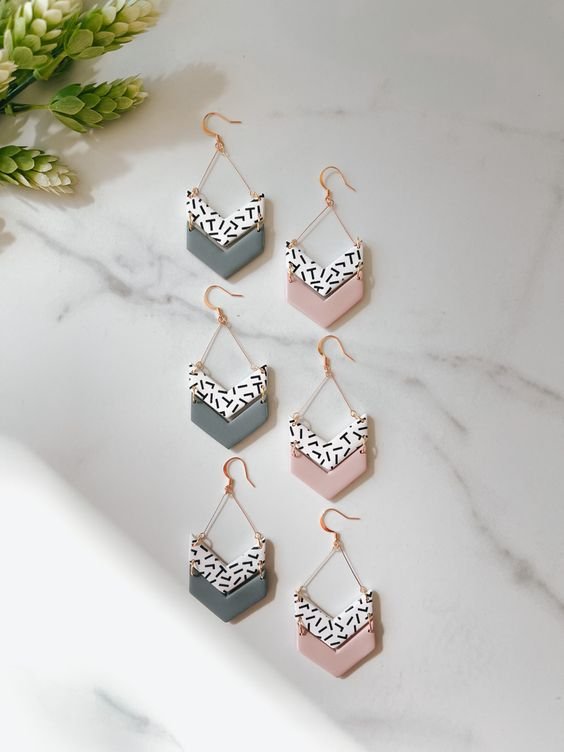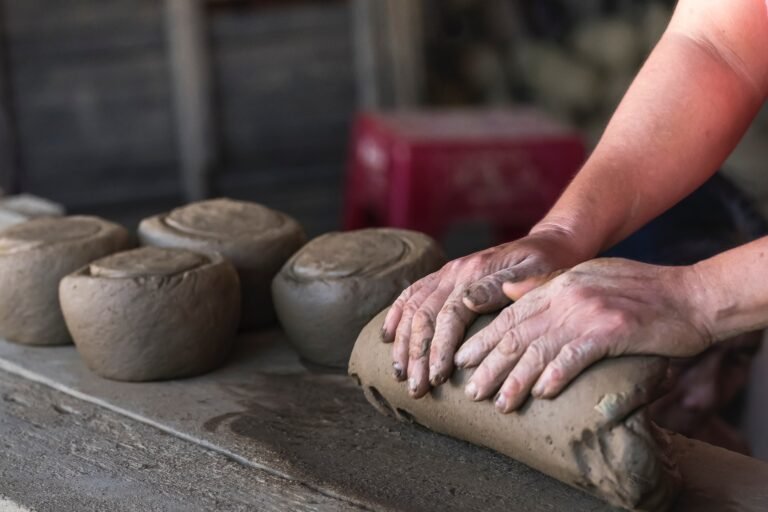How to Harden Modeling Clay? 6 Tips for Beginners
Every artist wants to keep their best work in a state that cannot be changed anymore, so it can be presented on the shelf for others to see. Even if you play with modeling clay and would like to harden for example your polymer earrings. But How to Harden Modeling Clay?
The most popular modeling clay widely known as Plasticine is not possible to harden. This clay is made for fun and can be reused all over again. But other types of clay like polymer clay can be baked and hardened.
In this article, we will explain the basic differences between modeling clay you can find on the market. To learn more about modeling clay, simply follow this link and find the best type for your future piece of art.
Types of modeling clay:
| Type | Baking/firing |
| Oil-based | no |
| Polymer | yes |
| Dough | no |
| Pottery | yes |
Clay that is the best choice for modeling is oil-based plasticine-type clay and it can’t be hardened or cured. Because of its characteristics and added wax, if you heat it at high temperatures, it will melt.
This type is usually used to make temporary models or for making molds.
The other two oil-based clays can be hardened in their own ways.
— Polymer clay – will get hardened if we heat it in the oven for a short time with sufficient heat
— Epoxy clay contains 2 parts which are resin and hardener. It will self-harden within 24 hours after those two parts have been mixed together.
All the oil-based clays can be “firmed up” if we just put them in the fridge or leave them out for a couple of hours but they won’t actually become hard. Your piece will be firm and not easy to destroy but don’t expect it to last for a really long time.
Can You Harden Modeling Clay In The Oven?
As we mentioned, modeling clay can be easily hardened in the oven and preserved from the decomposition of clay. The most important thing is to make sure that you use polymer clay for oven baking, and of course, follow some simple rules to avoid disappointment.
These days are popular earrings made of polymer clay. To preserve they work, artists are using the similar methods of drying as we are about to write in the lines that follows.

How To Harden Modeling Clay? -Beginner Tips
Start with placing your clay on a ceramic tile and put it in the oven for 15-30 minutes at low temperatures between 215-300 degrees Fahrenheit (100C – 150C). Instructions on a package may vary, so be sure to follow the right procedure for your type of polymer-based clay.
Especially do not put your clay into a preheated oven as it could easily crack.
One of the great advantages of polymer clay is painting. As soon as you finish painting your piece, it can go straight to the oven and you don’t need to wait for the paint to dry. Glazing will be done during the clay drying in the oven at a specific temperature. In praxis that means you just add 3-4 minutes to a baking process for a painted model.
6 Tips For Beginners Modeling With Air Dry Clay:
- Put your modeling clay on wax paper.
- Use hand lotion when handling clay
- Make the clay thick enough.
- Use water to remove any imperfections.
- During the drying process flip over your piece a few times.
- Choose an air-tight container for clay storage
This video shows some easy steps on how to do it in the oven:
How To Harden Modeling Clay In Microwave
To harden modeling clay without baking we can use a microwave and dry it super fast.
Step 1 – Find a microwave safe bowl and put your clay inside. Avoid ceramic bowls because it doesn’t work very well for this type of process.
Step 2 – Make sure that you cover the piece entirely with water and stay that way through the process
Step 3 – follow the simple formula of baking – 1o minutes for every 100 grams of clay. Really small pieces can be microwaved for about 2 minutes.
Step 4 – Check if there is enough water if you add up time. Don’t let the object dry, because it can easily burn. After it is finished, set it aside for a couple of minutes to cool down.
Our choice:
Our suggestion for hardening in a microwave would be Fimo Air Microwave modeling clay and Staedtler Fimo Efaplast clay. They are special clay designs for microwave drying but can be also air-dried if you want.
Important notice!
Never put oil-based modeling clay in the oven. It will melt in the oven causing damage and could start a fire. Use only a water-based modeling clay in the microwave.
How Long Does It Take For Modeling Clay To Harden Without An Oven?
If you choose air-drying clay then you don’t need to bake your piece as this modeling clay will dry and get firm within 72 hours. Check your piece of art every 4-6 hours and pay attention to cracks. This clay is water-based and moisture is coming out from your clay during the drying process, so very fast drying could result in cracks on your craft.
Different brands can dry a bit faster so you better check the curing temperature on the package instructions .
Another important thing is: Only use polymer clay for fun and craft, never for eating and drinking utensils.
Can You Harden Non-Hardening Modeling Clay?
Modeling clay, like plasticine, is meant to be for fun, for children’s play and it cannot harden. The special chemical formula allows it to be soft for hours, especially if you warm it with your hands. If you leave it outside of the box it can slightly change its characteristics and become a little bit dry, but it doesn’t mean that it will harden.
For the best result, always read the instructions on the clay package, also check the color as well because different colors of polymer clay have different baking times.







